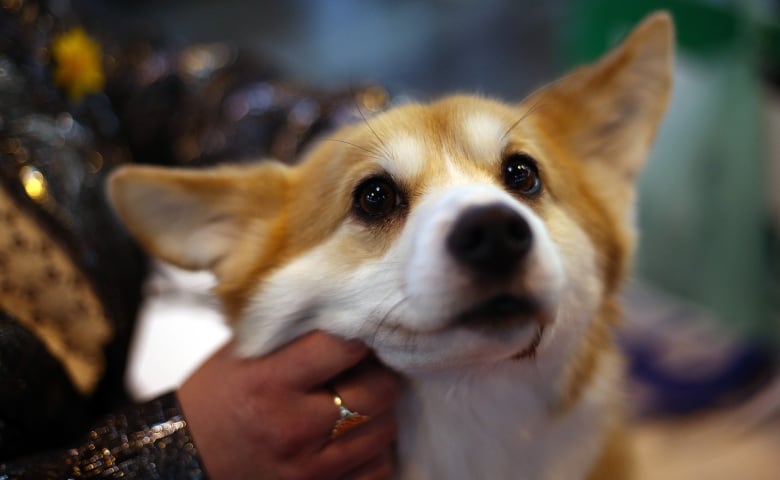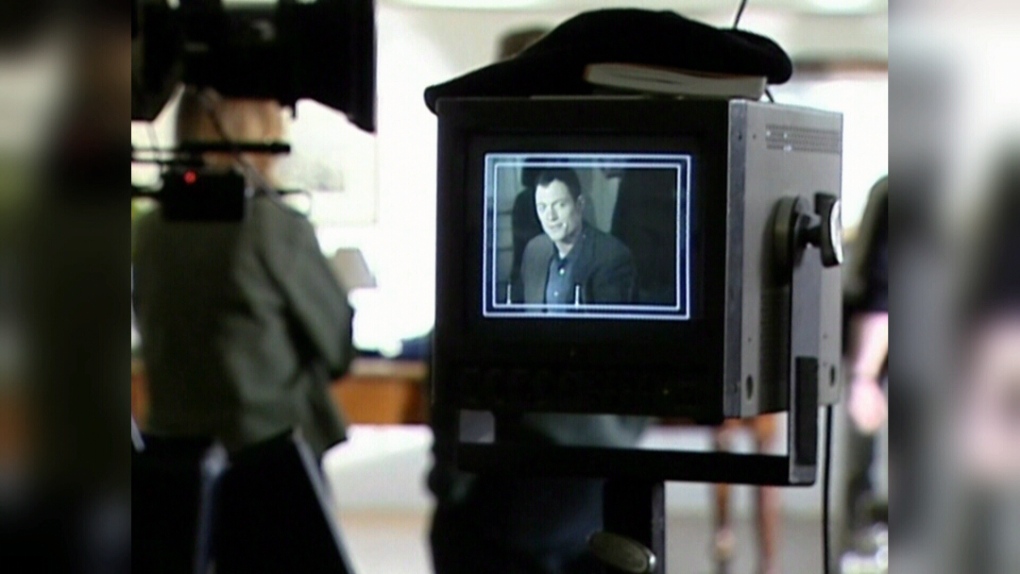Can owning a dog be a 'selfish' pursuit? This academic thinks so
People want animals in their lives as ‘accessories,' argues
PhD student Molly Labenski
Digging into the stories of dogs in American literature led Molly Labenski to realize a disconnect in our relationship to canines.
"I think over the last few decades we've developed a bit more of an entitlement when it comes to our relationship with dogs," said Labenski, who is finishing her PhD in English at Queen's University in Kingston, Ont.
Her deep dive into classics like Old Yeller — the story of a devoted dog who saves his human family on numerous occasions but gets a bullet in his head after contracting rabies — reveals a pattern in literature where dogs are discarded once their usefulness to humans subsides.
She says this attitude reflects our real-world relationship to dogs and other animals, arguing that people want them in their lives as "accessories" that can easily be discarded.
Labenski points to the high demand for so-called designer dog breeds, while thousands of dogs in shelters need good homes, as a clear example of that.
These designer dogs include mixed breeds such as goldendoodles (half golden retriever and half poodle) and cockapoos (Cocker spaniel/poodle), which are favoured because they don't shed as much, or pomskies (husky/Pomeranian), which are convenient for people who want smaller dogs.
"It's at the point where we've got designer dogs customized so they can come in any colour, any pattern, any size," said Labenski. "The word 'design' is perfect — you can design a dog in a way that really reduces them to more of a commodity than it does a companion."
According to statistics from the American Society for the Prevention of Cruelty to Animals and the Canadian Humane Society, in 2019 nearly 400,000 shelter dogs were euthanized across North America.
"If we really love dogs, we would be trying to help ones that already exist rather than creating ones for our weirdly specific needs," said Labenski, who adopted an Australian shepherd shelter dog during the pandemic.
"I think pet-keeping has become largely a selfish pursuit," she said. "We get dogs specifically for personal reasons that don't really benefit the dogs, whether it's to assuage our own loneliness or if you want to get more exercise, then getting a dog is the way to make that happen. Couples often get dogs to sort of test the waters before they have children."
High demand for dogs
Pets of all kinds have been in high demand during the pandemic. According to research by conducted by Abacus Data, about 900,000 more Canadians became new pet owners during the pandemic. (This data was collected through an online survey of 1,500 Canadian adults between June 4 and 9, 2021.)
Some animal shelters have noted an increase in pets being given up.
"It's been insane the number of surrenders we get — it's tripled in the time I've worked here," said Cassandra Ferrante, who for the past six years has been working as a dog trainer at Dog Tales, a private animal shelter and rescue near King City, north of Toronto.
"We get at least five to 10 [surrender] applications a day. We can't even keep up with the surrender requests."
Every year, Dog Tales is able to find adoptive homes for about 350 surrendered and rescued dogs. But for Ferrante, who now manages the kennel, dealing with the surrender requests is difficult.
"It's the least favourite part of my job, I would say, because I can't relate to people who are surrendering their dogs… I can't understand how someone can just dispose of their dog, no matter how hard it is, if you're moving or whatever."
What we can learn about dogs in literature
For her PhD work, Labenski combed through canonical works of American fiction in which dogs are discarded, killed or left for dead. She's identified troubling dog scenes in classics such as Harper Lee's To Kill a Mockingbird, John Steinbeck's The Grapes of Wrath and Toni Morrison's The Bluest Eye.
The working title of Labenski's thesis is "Who Let the Dogs Die?: Domestic Animal Abuse in American Fiction."
"For me, the dog characters in literature are just as important as the human ones," said Labenski. "We think we have this great relationship with animals, but the reality of the fiction shows us otherwise…. The dog is really often ignored as an individual in itself in literature."
Labenski draws on a framework known as animal standpoint theory, which aspires to analyze the literature from the animals' perspective.
One of the founding figures of this theory is Josephine Donovan, professor emerita in the department of English at the University of Maine and the author of The Aesthetics of Care: On the Literary Treatment of Animals.
"[Animals are] considered commodities," said Donovan. "And under the law, they're considered property. And in science, they're considered objects for laboratory experimentation. And so to the extent that literature comes to stabilize the objectification of animals, that's what animal standpoint criticism is [discouraging]."
Condemning violence against animals in literature is one thing, but Donovan goes further, arguing that animals should not be used in fiction without regard to their own point of view.
"Animals should not just be used as literary devices," said Donovan. "So often, they're just used as symbols or metaphors, or in some way to comment on the state of mind of the human character, and the animal herself is discarded and then basically ignored."
Donovan, whose forthcoming book is called Animals, Mind and Matter, would like to see literature that would "give the animals more voice."
"My overall goal is to break through this objectification and change the whole cultural notion so that we see animals as living subjects who have points of view, who have minds, who have feelings, who have thoughts, who have inner worlds, needs and wishes."
Animals 'rich as metaphors'
While intrigued by certain aspects of animal standpoint theory, fellow author and dog lover Richard Teleky isn't convinced.
"I'm genuinely puzzled about [Donovan's] attitude towards the imagination," said Teleky, editor of an anthology called The Exile Book of Canadian Dog Stories.
"If you are too judgmental about the way writers in the past have used animals, you do a disservice both to the writer and to the past … you're going to wipe out much of Western literature."
Booker-prize winning author Yann Martel also finds the animal-vantage-point approach restrictive.
"The usefulness of animals for me is precisely that they're very rich as metaphors," said Martel, whose novels Life of Pi and Beatrice and Virgil rely on animal characters to tell the story.
"We tend to be very cynical about our own species. We tend not to be cynical about animals, especially wild animals. We imbue animals with a sense of wonder, of marvel, and that's very useful for a storyteller, because then I can take an animal character and right away get beyond your natural cynicism."
As for the violence toward animals in the novels Labenski is studying, Martel argues it can inspire empathy, adding that writing stories strictly from an animal vantage limits the imagination.
"Stories are only useful for us. Animals don't have stories," said Martel, pointing out, for example, that telling the story of a slug from the slug's point of view serves no purpose for that creature. "And it'll be quite dull for us, because a slug has a very limited intellect."
Labenski remains committed to advocating for animals — even fictional ones.
"There'll always be a bit of a discrepancy between the opinions of literary critics and authors," she said. "I would say [to authors] to consider animals more fully than they are right now. It is easy to make animals ornamental in literature, because they are rather ornamental in our lives already."
Guests in this episode (in order of appearance):
Molly Labenski is a Queen's University PhD student in the English department. The working title of her thesis is "Who Let the Dogs Die?: Domestic Animal Abuse in American Fiction."
Cassandra Ferrante is a dog trainer at Dog Tales animal sanctuary near Newmarket, Ont.
Josephine Donovan is a professor emerita in the department of English at the University of Maine and the author of The Aesthetics of Care: On the Literary Treatment of Animals. Her forthcoming book is called On Animals, Mind and Matter.
Richard Teleky is a retired professor in the humanities department at York University and author of Dog on the Bed: a Canine Alphabet. He's also editor of the anthology The Exile Book of Canadian Dog Stories.
Yann Martel is the author of Life of Pi, which won the Man Booker Prize in 2002. Other novels include The High Mountains of Portugal and Beatrice and Virgil.
Written by Nicola Luksic. This episode is part of the Ideas from the Trenches series, produced by Nicola Luksic and Tom Howell.









 DGC BC
DGC BC



















